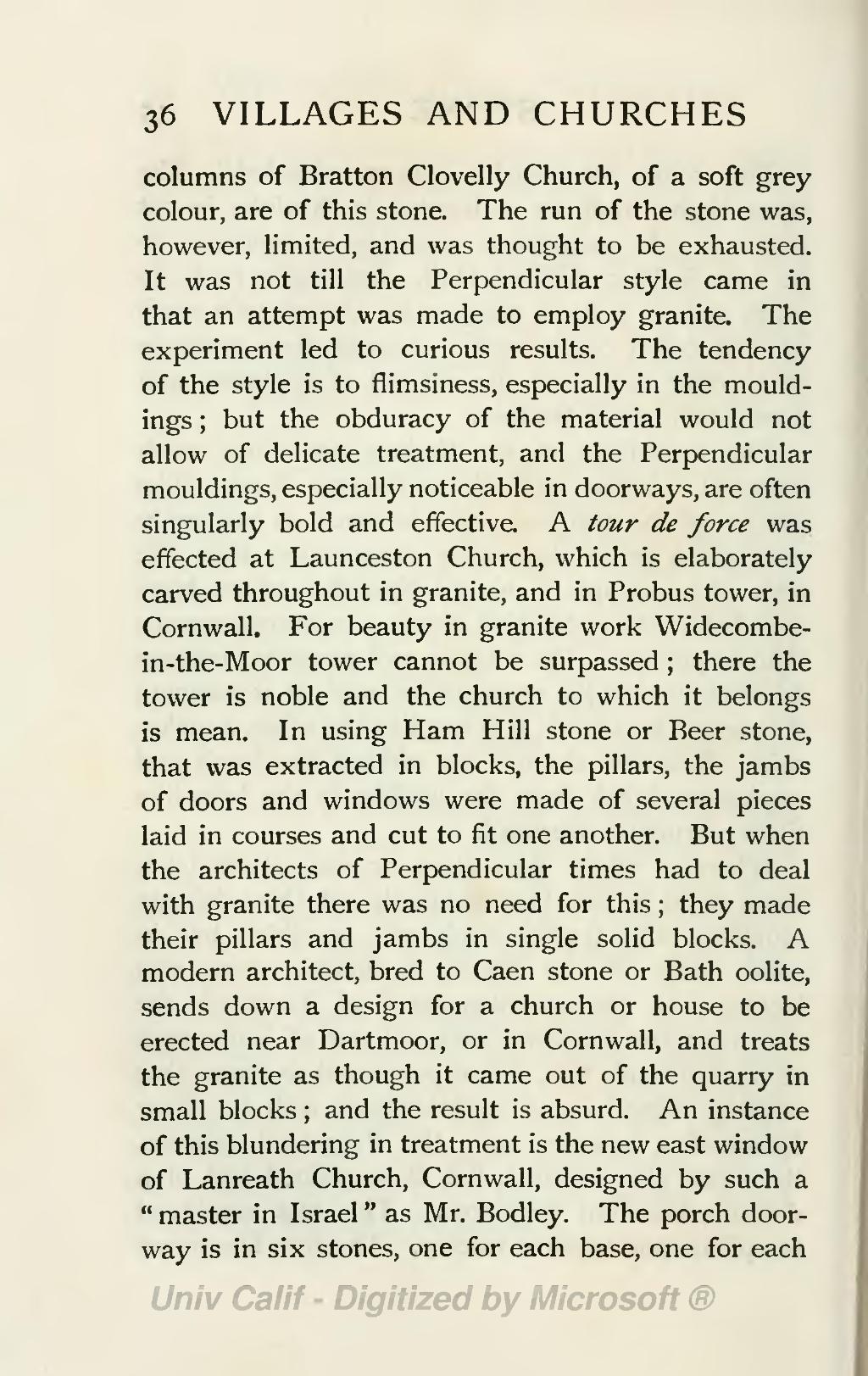columns of Bratton Clovelly Church, of a soft grey colour, are of this stone. The run of the stone was, however, limited, and was thought to be exhausted. It was not till the Perpendicular style came in that an attempt was made to employ granite. The experiment led to curious results. The tendency of the style is to flimsiness, especially in the mouldings; but the obduracy of the material would not allow of delicate treatment, and the Perpendicular mouldings, especially noticeable in doorways, are often singularly bold and effective. A tour de force was effected at Launceston Church, which is elaborately carved throughout in granite, and in Probus tower, in Cornwall. For beauty in granite work Widecombe-in-the-Moor tower cannot be surpassed; there the tower is noble and the church to which it belongs is mean. In using Ham Hill stone or Beer stone, that was extracted in blocks, the pillars, the jambs of doors and windows were made of several pieces laid in courses and cut to fit one another. But when the architects of Perpendicular times had to deal with granite there was no need for this; they made their pillars and jambs in single solid blocks. A modern architect, bred to Caen stone or Bath oolite, sends down a design for a church or house to be erected near Dartmoor, or in Cornwall, and treats the granite as though it came out of the quarry in small blocks; and the result is absurd. An instance of this blundering in treatment is the new east window of Lanreath Church, Cornwall, designed by such a "master in Israel" as Mr. Bodley. The porch doorway is in six stones, one for each base, one for each
